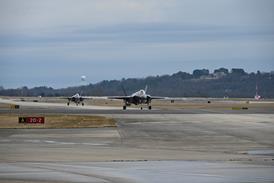Industry hopes rules will prompt lifting of national bans
The International Civil Aviation Organisation (ICAO) has finally adopted new standards for the commercial operation of single turbine-powered aircraft in a move that industry hopes will galvanise national authorities to lift their bans on such flights.
Aircraft complying with the new standards adopted by ICAO as an amendment to Annex 6 of its convention – which defines systems redundancy minima and how far they can fly from safe landing sites – would be fit to fly commercial services under instrument flight rules (IFR). Affected types are the Cessna 208 Caravan series, Pilatus PC-12 and EADS Socata TBM-700.
This ICAO guidance is expected to enable Europe's Joint Aviation Authorities to get final approval for long-awaited regulations permitting single engine IFR (SEIFR).
Many countries like Australia, Canada and the USA did not wait for ICAO before making their own rules permitting commercial SEIFR, and even JAA countries like Denmark, France, Norway, Spain, Sweden and Switzerland have gone ahead with partial or complete approval. "We believe that the proposals...may well raise the safety levels in those ICAO signatory states which already choose to permit such operations," says the UK Civil Aviation Authority.
The JAA is awaiting approval of the eleventh draft of its SEIFR regulation. Debate has hinged on how to ensure the best chance of safe landing in the event of engine failure. The draft regulation allows a total "risk period" in any flight of 15min during which it might not be possible to glide to a suitable landing site. The ICAO standard would allow routes that remain within 15min of landing sites, which would permit overwater flights of 30min.
DAVID LEARMOUNT/LONDON
Source: Flight International























